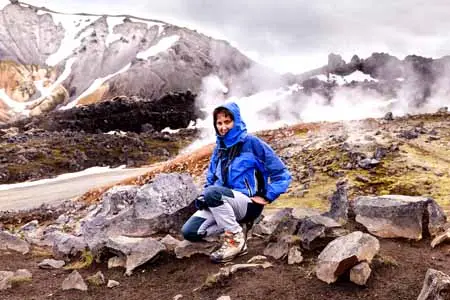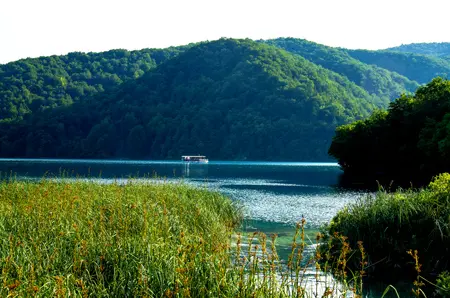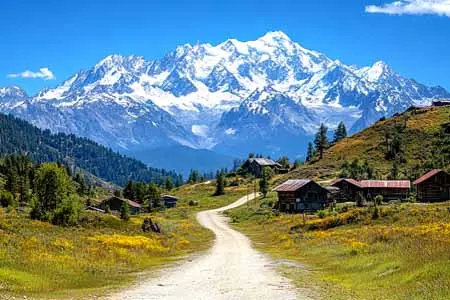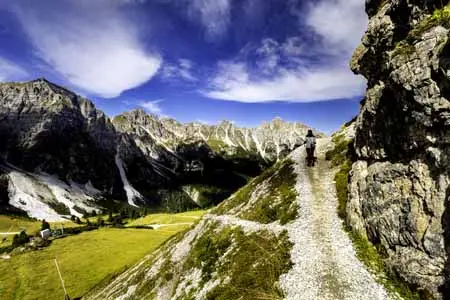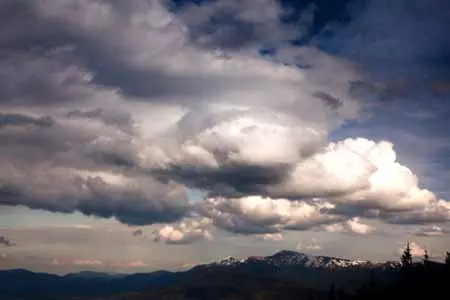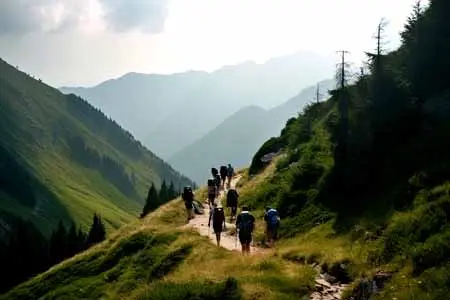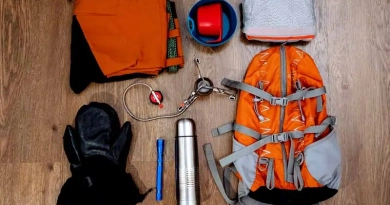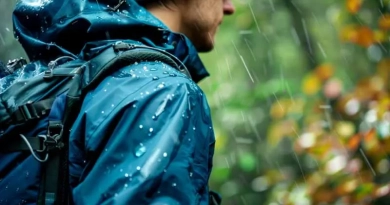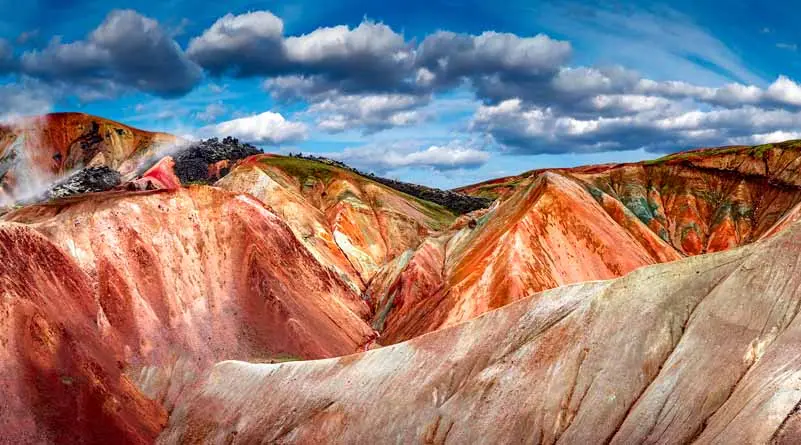
Discovering the 5 Best Hiking Trails in Europe
As an avid hiker and storyteller, my journey to uncover the 5 best hiking trails in Europe has been both exhilarating and enlightening. Europe’s diverse landscapes offer a plethora of trails that cater to all levels of hikers, from the breezy walks along the Amalfi Coast to the challenging climbs of the Alps.
What Makes European Trails Enthralling?
Europe is a hiker’s paradise, with trails that traverse through historical landscapes, breathtaking mountain views, and picturesque villages. The diversity in topography and climate across the continent means there’s always something new around each corner or over each mountain pass.
Top 5 Best Hiking Trails In Europe To Explore
Best hiking trails in Europe, European hiking adventures, Iconic European landscapes, Multi-day hikes in Europe, Cultural hiking routes Europe, Alpine treks, Hiking in the Alps, Amalfi Coast hikes, Plitvice Lakes hiking, Tour du Mont Blanc, Hiking trails in Europe, European landscapes, Adventure hiking in Europe, Multi-day European hikes, Hiking, European culture, Alpine hiking trails, Alps trekking, Hiking Amalfi Coast, Hiking Plitvice Lakes, Hiking Tour du Mont Blanc,
1. The Laugavegur Trek, Iceland
The Laugavegur Trek in Iceland stands out as one of Europe’s most iconic hiking trails, known for its striking and diverse landscapes that seem as if they’ve been pulled from another planet. This 55 km journey through the highlands of Iceland connects Landmannalaugar to Thórsmörk and is typically traversed over four days.
 Unique Geological Features
Unique Geological Features
The trek starts in the geothermal area of Landmannalaugar, famous for its natural hot springs and surrounding rhyolite mountains. The mountains display a vibrant palette of colors, including reds, pinks, greens, and yellows, created by volcanic activity that has oxidized the iron in the rocks. As hikers move along the trail, they encounter vast lava fields and obsidian deserts, stark reminders of Iceland’s volcanic heritage.
Diverse Ecosystems and Landscapes
Further along the trail, the environment shifts dramatically. Hikers travel through lush valleys filled with vibrant wildflowers, cross icy streams coming from glaciers, and navigate snow patches even in summer months. The trail offers panoramic views of glaciers, notably the Mýrdalsjökull glacier, which looms in the distance as one approaches Thórsmörk.
Wilderness and Accommodation
The sense of remoteness is palpable as the trail cuts through uninhabited areas where the only sounds are natural. This isolation makes for a profound wilderness experience, making it one of the 5 best hiking trails in Europe. The Icelandic Touring Association runs a number of mountain huts along the route that offer basic accommodations for hikers. These huts are strategically located at the end of each day’s hike and offer a place to rest, cook, and socialize with fellow trekkers.
Challenges and Preparations
Despite its beauty, the Laugavegur Trek presents challenges such as sudden weather changes and river crossings, which can be daunting without the right preparation. The trail is marked but weather conditions can cause visibility issues, so GPS and a detailed map are essential. Hikers must be prepared with appropriate gear for cold, wet, and windy conditions. It’s also recommended to book the huts well in advance due to their limited capacity.
A Trek for the Adventurous
The Laugavegur Trek is not just a hike; it’s an adventure that offers both physical challenges and the rewards of some of the most extraordinary sights in Iceland. Whether it’s the multicolored rhyolite mountains, sprawling lava fields, or the lush valleys of Thórsmörk, this trek is a testimony to the natural wonders of the Icelandic landscape. It’s an immersive experience into the raw beauty of an untamed environment, making it a must-do for avid hikers seeking a unique and memorable outdoor experience.
2. Plitvice Lakes National Park
Plitvice Lakes National Park in Croatia is a UNESCO World Heritage site celebrated for its distinctive beauty, characterized by a series of turquoise lakes connected by waterfalls and cascades. The park offers a well-organized network of trails and wooden walkways that allow visitors of all ages and abilities to navigate through its scenic landscapes easily.
 Geological and Hydrological Significance
Geological and Hydrological Significance
The lakes are renowned for their dynamic colors, ranging from deep azure to bright turquoise, changing depending on the minerals or organisms in the water and the angle of sunlight. The sedimentation of calcium carbonate from the water results in tufa formations, which cause this phenomenon. Over thousands of years, these formations have built natural dams, which in turn have created a series of beautiful lakes, caves, and waterfalls.
Trail Options and Accessibility
Plitvice Lakes is designed to cater to various physical levels and time constraints, offering different hiking programs known as “routes” and “trails.” These are clearly marked and range from short walks that take about an hour to complete loops that might take six to eight hours. The park’s management has constructed the trails to maximize visitor experience while preserving the natural environment, making it one of the 5 best hiking trails in Europe. Boardwalks are laid out to allow close views of the waterfalls and the lakes without causing damage to the delicate ecosystems.
Visitor Experience and Conservation Efforts
The park is divided into the Upper and Lower Lakes. The Lower Lakes area is where the largest and most spectacular waterfalls are located, including the famous Great Waterfall (Veliki Slap), which is the tallest in Croatia. The Upper Lakes area is quieter, characterized by dense forests and a series of smaller, cascading lakes linked by charming waterfalls.Visitors are encouraged to follow the park’s guidelines strictly to preserve its natural beauty. This includes sticking to marked paths, not swimming in the lakes, and carrying out all trash. Despite its popularity, the park maintains a tranquil and pristine atmosphere, making it a must-visit for nature lovers.
Seasonal Beauty and Photographic Opportunities
Each season brings a different facet of beauty to Plitvice Lakes. Spring highlights the lush greenery and full-flowing waterfalls due to the melting snow; summer emphasizes the vibrant colors of the lakes; autumn surrounds the lakes with fiery fall colors; and winter occasionally freezes the waterfalls into spectacular ice sculptures. Photographers and nature enthusiasts alike will find Plitvice Lakes a rewarding subject year-round. Plitvice Lakes National Park exemplifies conservation success, with managed tourist paths that provide accessibility while protecting the landscape’s natural beauty. It offers a peaceful escape into nature with the added convenience of well-thought-out facilities and hiking options, ensuring that every visitor can have a memorable experience tailored to their preferences and capabilities.
3. The Path Of The Gods in Italy
The Path of the Gods, known locally as “Sentiero degli Dei,” is a renowned hiking trail that offers some of the most dramatic views of the Amalfi Coast in Italy. Stretching approximately 5.6 kilometers, it connects the small hilltop town of Agerola with Nocelle, a fraction of Positano nestled in the mountains. This trail is accessible to most due to its relatively gentle incline and well-maintained paths, making it a favorite for day hikers.
 Sweeping Views and Natural Beauty
Sweeping Views and Natural Beauty
As you traverse the Path of the Gods, the vistas are nothing short of breathtaking. The route offers expansive views over the Tyrrhenian Sea, with cliffs that plunge dramatically into the azure waters below. Along the way, hikers are treated to a panorama that includes the islands of Capri and Ischia, visible on clear days. The trail itself meanders through terraced vineyards, olive groves, and the rugged mountainous landscape typical of the Amalfi Coast, offering a glimpse into both the natural and cultivated beauty of the region.
Cultural and Historical Significance
The trail is steeped in mythology and history, which adds an enriching layer to the hiking experience. It is said that the gods themselves walked these paths to reach the seas, which they believed were the meeting places of the sirens who tried to lure Odysseus from his ship. This mythical connection brings a sense of wonder and timelessness to the hike, connecting walkers with the rich tapestry of Italian and Mediterranean lore, making it one of the 5 best hiking trails in Europe.
Accessibility and Preparation
Starting from Bomerano in Agerola, the path is well-marked and predominantly downhill towards Nocelle, making it accessible for those who may not be experienced hikers but still wish to enjoy a full day of walking. It is advisable to wear comfortable hiking shoes and bring water and snacks, as there are few services along the trail until you reach Nocelle. From Nocelle, hikers can descend stairs to Positano or catch a local bus, making the return trip convenient.
Ecotourism Impact
The Path of the Gods is maintained with an emphasis on preserving the natural environment, allowing hikers to enjoy the area responsibly. Local authorities regulate the trail to prevent overcrowding and ensure that its popularity does not detract from the natural beauty or sustainability of the region.
A Memorable Experience
Hiking the Path of the Gods is more than just a physical activity; it’s an immersive experience that offers a unique combination of spectacular natural beauty, deep cultural heritage, and accessible adventure. Whether you are a seasoned hiker or a casual walker, the trail provides an unforgettable glimpse into the heart of the Amalfi Coast’s stunning landscape and the mythology that has shaped it. This makes it not only a must-visit for outdoor enthusiasts but also a worthwhile addition to any travel itinerary in Italy.
4. Tour du Mont Blanc, France/Italie/Switzerland
The Tour du Mont Blanc (TMB) is a comprehensive and challenging multi-day hike that stretches approximately 170 kilometers (105 miles) around the Mont Blanc massif, encompassing parts of France, Italy, and Switzerland. This trek is renowned for its rigorous paths and breathtaking alpine scenery, taking roughly 10 to 11 days to complete, making it a favorite among avid hikers seeking a demanding yet rewarding outdoor adventure.
 Varied Alpine Landscapes
Varied Alpine Landscapes
As hikers embark on the TMB, they traverse a variety of terrains, from lush meadows and glacial valleys to rocky passes and forested trails. The route offers constant visual rewards, including views of dramatic peaks, serene lakes, and ancient glaciers. Each segment of the trail presents new vistas and perspectives of the Alps, which vary significantly as the trail crosses international borders.
Cultural Interactions
One of the unique aspects of the TMB is the opportunity to experience three distinct cultures, making it one of the 5 best hiking trails in Europe. In France, the trail begins and often ends in Chamonix, a renowned hub for alpinists. In Italy, the path winds through quaint villages like Courmayeur, where hikers can indulge in Italian cuisine and coffee. Switzerland offers meticulously maintained trails and the opportunity to enjoy Swiss hospitality in towns like Champex-Lac. Each country contributes its own unique flair to the trek, enhancing the overall experience.
Accommodation and Logistics
Accommodation along the TMB ranges from cozy mountain refuges to charming inns and hotels, providing hikers with various options based on comfort and budget. It is crucial to book these accommodations well in advance, especially during the high season, as the route is extremely popular. Many hikers opt for self-guided tours where a service handles all bookings and logistics, including baggage transfer, allowing them to hike with just a daypack.
Physical Demands and Preparation
The TMB is demanding; it requires good physical fitness and preparation. The trail includes several high passes, with daily ascents and descents of at least 1,000 meters (about 3,280 feet). Proper gear is essential, including sturdy hiking boots, all-weather clothing, and navigation tools. Despite the physical challenges, the paths are well-marked and maintained, making navigation straightforward for those with moderate hiking experience.
Environmental and Safety Considerations
Hikers are encouraged to follow Leave No Trace principles to preserve the environment. The trail’s popularity necessitates conscious efforts to minimize impact, including sticking to marked paths and managing waste properly. Weather in the Alps can change rapidly, so hikers need to be prepared for all conditions and have contingency plans in place.
Completing the Tour du Mont Blanc is a badge of honor for many hikers, offering not just physical challenges but also a deep, immersive connection with the natural beauty and cultural richness of the Alps. Each step along this epic trail provides a story, a view, or a moment that is likely to be remembered for a lifetime. Whether seeking solitude, adventure, or a test of endurance, the TMB delivers an unforgettable experience that draws thousands of hikers from around the globe each year.
5. The Emperor’s Crown, Austria
Challenges and Considerations of The Best Hiking Trails In Europe
When considering the challenges and considerations of hiking the best trails in Europe, adventurers must prepare for a variety of conditions and logistical considerations to ensure a safe and enjoyable experience.
 Rapidly Changing Weather Conditions
Rapidly Changing Weather Conditions
One of the primary challenges faced by hikers in Europe is the unpredictability of weather, especially in mountainous regions. Conditions can shift swiftly from sunny to stormy, which not only affects visibility but can also make paths slippery and dangerous. It’s essential for hikers to check weather forecasts regularly, plan for various weather scenarios by carrying appropriate gear, and have contingency plans in place. This might include alternative routes or the possibility of pausing the hike if the weather turns severe.
Varied Terrain
European trails can vary greatly in terrain, from smooth, well-trodden paths to rugged, steep sections that may require technical hiking skills. For instance, trails like the GR20 in Corsica present challenging rocky passages that demand good physical conditioning and proper hiking boots. Hikers should familiarize themselves with the specific demands of their chosen trail and ensure they have the right equipment and physical readiness for the terrain they will encounter.
Booking Accommodations
For popular trails like the Tour du Mont Blanc, which passes through France, Italy, and Switzerland, securing accommodations can be a significant challenge due to high demand. Hikers often need to book refuges, hotels, or inns months in advance, especially during peak hiking seasons. Failure to secure lodging can mean adjusting travel dates or altering routes, so early planning is crucial.
 Cultural Considerations
Cultural Considerations
Hiking in Europe also involves navigating different cultural norms and practices. This includes understanding local regulations regarding trail use, respecting private property, and interacting courteously with locals and other hikers. Additionally, language barriers can pose a challenge, so learning basic phrases or carrying a translation guide can be beneficial.
Environmental Impact
With the growing popularity of hiking, there’s an increasing need to consider the environmental impact. Hikers are urged to follow Leave No Trace principles to minimize their footprint. This includes sticking to designated trails, managing waste properly, and being mindful of wildlife and natural habitats. In some areas, like the Dolomites in Italy, there are specific guidelines that hikers are expected to adhere to in order to preserve the delicate alpine environment.
Emergency Preparedness
Finally, despite all the preparations, emergencies can still occur. Hikers should have a clear understanding of how to deal with potential emergencies, from injuries and illnesses to getting lost. Carrying a first aid kit, emergency contact numbers, and knowing the location of the nearest help points are all essential safety measures. Many trails are in remote areas where mobile phone service may be unreliable, so considering alternate communication devices like a satellite phone or a GPS tracker is advisable.
By addressing these challenges with careful planning and preparation, hikers can enhance their safety and enjoyment when tackling some of Europe’s most breathtaking trails.
Resources and Tools for Hiking in Europe
- When embarking on hikes across Europe’s diverse landscapes, having the right resources and tools is essential for both safety and enjoyment. Here’s a breakdown of crucial items every hiker should consider:
Good Hiking Boots
High-quality hiking boots are essential for navigating the rugged terrains of European trails. Boots should provide good ankle support, have a rugged sole for traction, and be waterproof to handle various weather conditions. For long-distance treks, the importance of well-fitted, durable boots cannot be overstated, as they prevent injuries and provide the necessary stability on uneven surfaces.
Maps and GPS
Reliable navigation tools are crucial, especially on less traveled or complex trail networks. Physical topographic maps are invaluable for understanding the terrain and planning routes. In conjunction with physical maps, a GPS device or a smartphone with GPS capabilities can help in tracking your location in real-time. Apps like GAIA GPS, Komoot, and AllTrails offer downloadable maps, which can be a lifeline on remote trails where cell service is nonexistent.
Local Guides
For trails that involve complex navigation or are rich in cultural and historical significance, hiring local guides can enhance the experience significantly. Guides not only provide valuable insights about the area’s history and culture but also ensure safety in potentially hazardous sections of the trail. They can also offer tips on local flora and fauna, adding an educational component to your hiking adventure.
Appropriate Clothing
The weather in many parts of Europe can change rapidly, especially in mountainous areas. Layered clothing allows for adjustments throughout the day, adapting to varying temperatures and weather conditions. Essential items include moisture-wicking base layers, an insulating layer, and a waterproof outer layer. Such adaptability is crucial for comfort and protection against the elements.
Additional Essential Gear
- Hydration System: Carrying enough water and having a way to purify water from natural sources is vital. Hydration packs or durable water bottles coupled with portable water filters or purification tablets are recommended.
- First aid kit: Always carry a basic first aid kit tailored to the specific nature and duration of the hike. Include items for treating minor injuries and any personal medications.
- Emergency Shelter: For longer or more remote hikes, having an emergency shelter (like a lightweight bivy sack or space blanket) can be life-saving if you get stranded.
Technology for Safety
- Personal Locator Beacon (PLB) or Satellite Messenger: For remote hiking areas, these devices can be crucial for emergency situations where no cell service is available.
- Headlamp: A reliable headlamp with extra batteries ensures you’re never caught without light if you end up hiking longer than planned or through tunnels and darker paths.
By equipping yourself with these tools and resources, you can ensure a safer and more enjoyable hiking experience across Europe’s varied landscapes.
Conclusion
Hiking in Europe transcends a mere walk in nature; it is an immersive journey through a vibrant tapestry of natural beauty and rich cultural history. Each trail across the continent offers unique encounters and challenges, each concluding with rewarding vistas and personal achievements that resonate long after the journey ends. Those included in this article truly are the 5 best hiking trails in Europe. Trails, we hope you get to experience!
The Uniqueness of Each Trail
In Europe, every hiking path has its own narrative, shaped by the natural environment and historical context that define it. From the volcanic landscapes of Iceland’s Laugavegur Trek to the mythical paths along Italy’s Amalfi Coast, these trails are not just routes but stories laid down through the ages. They invite hikers not only to witness the beauty of nature but to step into history itself, exploring ancient trade routes, pilgrimage paths, and battlegrounds that have shaped civilizations.
 A Blend of Nature and Culture
A Blend of Nature and Culture
The diversity of Europe’s landscapes offers an extensive range of experiences. Northern trails often feature rugged terrains and dramatic weather shifts, demanding resilience and adaptability, while southern paths may weave through ancient ruins and olive groves, their skies nearly always clear. This blend of elements ensures that whether one seeks the serenity of a leisurely stroll or the thrill of a challenging trek, the trails of Europe provide.
A Gateway to Adventure
The act of hiking in Europe is also an act of discovery. Each step forward is a move toward understanding the continent’s indomitable spirit of adventure—each peak and valley telling stories of endurance and exploration. It’s a pursuit that is as varied as the hikers who embark on these trails, suitable for the solitary wanderer seeking peace, the history buff keen on exploring ancient sites, or the ardent naturalist hoping to capture unspoiled landscapes.
Connecting with the Past and Present
Moreover, these trails offer a way to connect—not just with nature but with people. They are a social experience, a way for individuals from all over the world to meet and share in the universal joy of discovery. The paths are lined with both the echoes of history and the lively banter of fellow hikers, blending past and present into one enriching experience.
In conclusion, hiking in Europe is a multifaceted adventure that offers more than just physical activity—it’s a deep dive into the continent’s soul. It’s an opportunity to experience breathtaking views, challenge oneself, and make personal triumphs amidst landscapes steeped in history and cultural significance. Whether you are traversing the snow-capped peaks of the Alps or the sunny, rugged coasts of the Mediterranean, Europe’s trails are open, inviting all who seek the grandeur and adventure inherent in their winding paths and towering vistas.

